
Maxwell Lemuel Roach was an American jazz drummer and composer. A pioneer of bebop, he worked in many other styles of music, and is generally considered one of the most important drummers in history. He worked with many famous jazz musicians, including Clifford Brown, Coleman Hawkins, Dizzy Gillespie, Charlie Parker, Miles Davis, Duke Ellington, Thelonious Monk, Abbey Lincoln, Dinah Washington, Charles Mingus, Billy Eckstine, Stan Getz, Sonny Rollins, Eric Dolphy, and Booker Little. He also played with his daughter Maxine Roach, Grammy nominated Violist. He was inducted into the DownBeat Hall of Fame in 1980 and the Modern Drummer Hall of Fame in 1992.

Hard bop is a subgenre of jazz that is an extension of bebop music. Journalists and record companies began using the term in the mid-1950s to describe a new current within jazz that incorporated influences from rhythm and blues, gospel music, and blues, especially in saxophone and piano playing.

Clifford Benjamin Brown was an American jazz trumpeter, pianist and composer. He died at the age of 25 in a car crash, leaving behind four years' worth of recordings. His compositions "Sandu", "Joy Spring", and "Daahoud" have become jazz standards. Brown won the DownBeat magazine Critics' Poll for New Star of the Year in 1954; he was inducted into the DownBeat Hall of Fame in 1972.

Tadley Ewing Peake Dameron was an American jazz composer, arranger, and pianist.

Richard Powell was an American jazz pianist, composer, and arranger. He was not assisted in his musical development by Bud, his older and better known brother, but both played predominantly in the bebop style.

Saxophone Colossus is the sixth studio album by American jazz saxophonist Sonny Rollins. Perhaps Rollins's best-known album, it is often considered his breakthrough record. It was recorded monophonically on June 22, 1956, with producer Bob Weinstock and engineer Rudy Van Gelder at the latter's studio in Hackensack, New Jersey. Rollins led a quartet on the album that included pianist Tommy Flanagan, bassist Doug Watkins, and drummer Max Roach. Rollins was a member of the Clifford Brown/Max Roach Quintet at the time of the recording, and the recording took place four days before his bandmates Brown and Richie Powell died in a car accident on the way to a band engagement in Chicago. Roach appeared on several more of Rollins' solo albums, up to the 1958 Freedom Suite album.
"I'll Remember April" is a popular song and jazz standard with music written in 1941 by Gene de Paul, and lyrics by Patricia Johnston and Don Raye. It made its debut in the 1942 Abbott and Costello comedy Ride 'Em Cowboy, being sung by Dick Foran. The lyric uses the seasons of the year metaphorically to illustrate the growth and death of a romance. The lyric also uses the ideas of the hours in a day and the flames of a fire to illustrate a relationship growing stronger and subsequently losing strength. Another interpretation is the use of spring to express the loves that were had in youth and remember them when the autumn of life arrives with affection and nostalgia, smiling: "I'll remember April and I smile". The song has been described as one which makes use of nostalgia.

Study in Brown is a Clifford Brown and Max Roach album. The album consists predominantly of originals by members of the band. The songs "Lands End", by tenor saxophonist Harold Land, and "Sandu", by Brown, have gone on to become jazz standards. The song "George's Dilemma" is also known as "Ulcer Department". Brown's solo on "Cherokee" is among the most acclaimed solos in jazz.

Max Roach + 4 is an LP recorded by jazz drummer Max Roach, which featured Kenny Dorham on trumpet, Sonny Rollins on tenor sax, Ray Bryant on piano, and George Morrow on bass. It was the first album Roach recorded after his collaborators, trumpeter Clifford Brown and pianist Richie Powell, died in a car crash in June 1956.
Carl Perkins was an American jazz pianist.
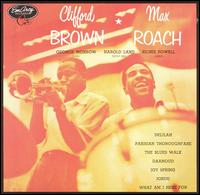
Clifford Brown & Max Roach is a 1954 album by influential jazz musicians Clifford Brown and Max Roach as part of the Clifford Brown and Max Roach Quintet, described by The New York Times as "perhaps the definitive bop group until Mr. Brown's fatal automobile accident in 1956". The album was critically well received and includes several notable tracks, including two that have since become jazz standards. The album was inducted into the Grammy Hall of Fame in 1999. It is included in Jazz: A Critic's Guide to the 100 Most Important Recordings, where it is described by New York Times jazz critic Ben Ratliff as "one of the strongest studio albums up to that time".
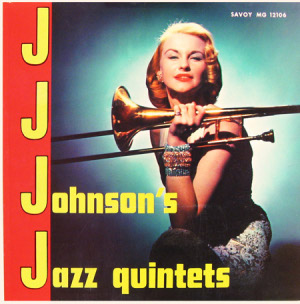
J. J. Johnson's Jazz Quintets is a studio album by jazz trombonist J. J. Johnson, released by Savoy Records, containing material from three different recording sessions in 1946, 1947 and 1949. Material from the first two sessions had been previously released on two Savoy EPs, New Trends In Jazz, Vol. 11 and Birth of Bop, Vol. 3. The album was re-issued on CD in 1992, and again in 1994 on the Savoy Jazz label.

Sonny Rollins Plus 4 is a jazz album by Sonny Rollins, released in 1956 on Prestige Records. On this album Rollins plays with the Clifford Brown/Max Roach Quintet. The album was the last recording including pianist Richie Powell and Brown, as both died in a car accident three months later.
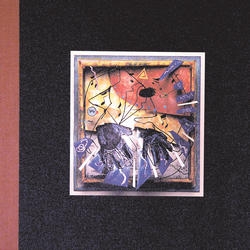
The Complete Bud Powell on Verve is a five-disc box set, released on September 27, 1994, by Verve Records, containing all of jazz pianist Bud Powell's recordings as leader for producer Norman Granz.
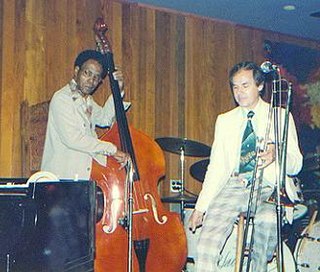
George Morrow was a jazz bassist. Although most closely associated with Max Roach and Clifford Brown, Morrow also appears on recordings by Sonny Rollins and Sonny Stitt.

This article presents the discography of the jazz saxophonist and band leader Sonny Rollins.

By the end of the 1940s, the nervous energy and tension of bebop was replaced with a tendency towards calm and smoothness, with the sounds of cool jazz, which favoured long, linear melodic lines. It emerged in New York City, as a result of the mixture of the styles of predominantly white swing jazz musicians and predominantly black bebop musicians, and it dominated jazz in the first half of the 1950s. The starting point were a series of singles on Capitol Records in 1949 and 1950 of a nonet led by trumpeter Miles Davis, collected and released first on a ten-inch and later a twelve-inch as the Birth of the Cool. Cool jazz recordings by Chet Baker, Dave Brubeck, Bill Evans, Gil Evans, Stan Getz and the Modern Jazz Quartet usually have a "lighter" sound which avoided the aggressive tempos and harmonic abstraction of bebop. Cool jazz later became strongly identified with the West Coast jazz scene, but also had a particular resonance in Europe, especially Scandinavia, with emergence of such major figures as baritone saxophonist Lars Gullin and pianist Bengt Hallberg. The theoretical underpinnings of cool jazz were set out by the blind Chicago pianist Lennie Tristano, and its influence stretches into such later developments as Bossa nova, modal jazz, and even free jazz. See also the list of cool jazz and West Coast musicians for further detail.

Standard Time, Vol. 2: Intimacy Calling is an album by jazz trumpeter Wynton Marsalis that was released in 1990. The album reached peak positions of number 112 on the Billboard 200 and number 1 on the Billboard Top Jazz Albums chart.
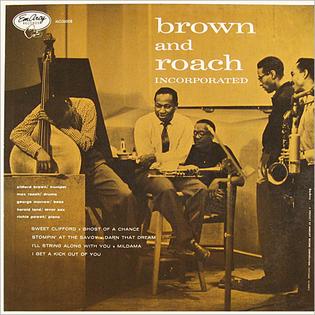
Brown and Roach Incorporated is an album by American jazz trumpeter Clifford Brown and drummer Max Roach featuring tracks recorded in August 1954 and released on the EmArcy label.

Alone Together: The Best of the Mercury Years is a compilation album featuring recordings by trumpeter Clifford Brown and drummer Max Roach in groups together and separately which were originally released on Mercury and subsidiary labels.


















